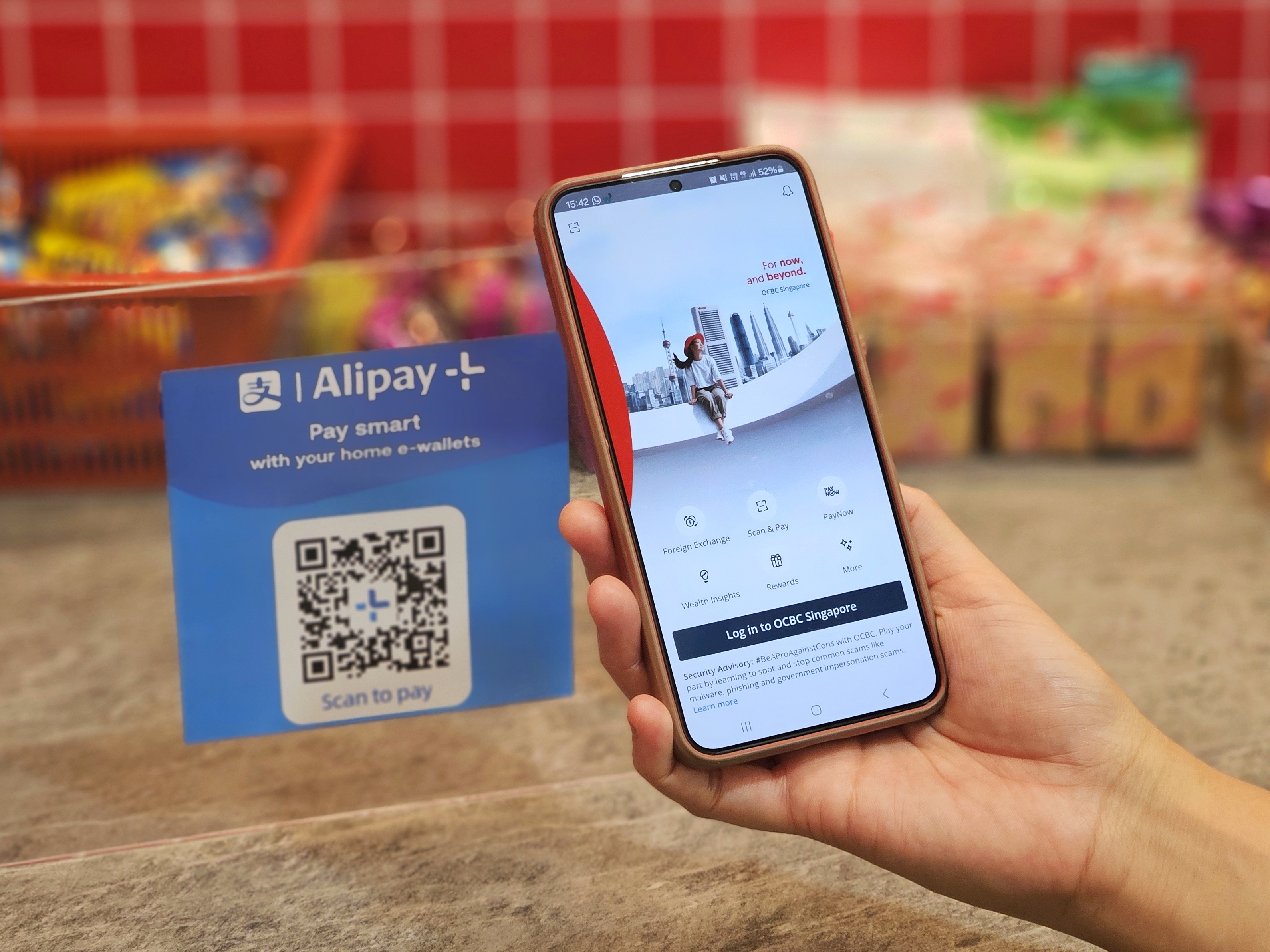OCBC aims to quadruple number of cross-border QR payments in 2024
OCBC aims to quadruple number of cross-border QR payments in 2024
The goal of 250,000 transactions in 2024 comes after 2023’s strong performance due to a comprehensive suite of five cross-border QR payment platforms available on the OCBC Digital app

Singapore, 26 March 2024 – After becoming the only bank in Singapore to offer five cross-border QR payment products on its mobile app, OCBC expects to facilitate 250,000 cross-border QR payments in 2024. This is quadruple the number of such transactions made in 2023. With QR code payment adoption rising significantly since the Covid-19 pandemic, cross- border QR payments is set to join the ranks of credit and debit cards, which have been the primary travel payment method for decades.
In the last 12 months, the Bank has integrated cross-border payment platforms Alipay+, UnionPay International, Thailand’s PromptPay, Malaysia’s DuitNow and Indonesia’s Quick Response Indonesian Standard into the OCBC Digital app. This enables OCBC customers with Singapore bank accounts to make QR payments easily when traveling abroad. In total, these payment networks cover millions of merchants in more than 40 countries.
With no need to exchange cash or download additional e-wallet apps, the number and value of cross-border QR payments on the OCBC Digital app had seen month-on-month growth averaging 65% and 80% respectively last year. Two macroeconomic trends will continue to spur usage: the rapid proliferation of QR code payments in the region, and the anticipated spike in travellers to Mainland China, where QR codes are a mainstay in the payment landscape.
QR code payments are enjoying a recent boom post-pandemic, as they are cheap to set up and accessible. In Southeast Asia alone, the volume of QR code payments is expected to grow over 590% in five years, from 13 billion in 2023 to 90 billion in 2028. Asean governments also committed last year to creating a regional QR cross-border payment network to bolster financial connectivity.
Higher traffic to Mainland China, where QR codes are ubiquitous, will also drive usage. The mutual 30-day visa-free arrangement between Singapore and Mainland China that took effect last month is expected to further increase travel between the two nations. Already, Mainland China was the market where the greatest number of cross-border QR payments – 57 per cent – were made using the OCBC Digital app in 2023. Of note was OCBC’s partnership with Alipay+. In Mainland China, Alipay is used for almost everything, from hailing a taxi to paying for meals to shopping online. Last September, OCBC became the first bank in Singapore to tie up with Alipay+. Since then, there has been a 7-fold increase in cross-border QR payments via the OCBC Digital app.
Besides Mainland China, Thailand (20% of the number of cross-border QR payments) and Malaysia (18%) rounded up the top three markets in which OCBC customers made cross-border QR payments in 2023.
Mr Sunny Quek, Head of Global Consumer Financial Services, OCBC, said: “Today, we have the most comprehensive app among banks in Singapore with the most cross-border QR payment platforms onboard. The evolution of the payment landscape, coupled with travel becoming the new normal again, has given us confidence that we will be able to grow cross-border QR transaction numbers by 4 times. Our partnerships with Alipay+ and UnionPay International have significantly expanded coverage for our customers who travel, especially to Mainland China. As more people travel and adopt digital payments, we will continue to look out for strategic partnerships that bring value to our customers and make OCBC Digital the undisputable go-to app for our customers when they travel.”
For more information on how to make cross-border QR payments, please refer to the Appendix below.
APPENDIX
How to make cross-border QR payments on OCBC Digital
Where customers previously might have had to rely on cash or download additional e-wallet apps, now they need only use their OCBC Digital app to make cross-border payments easily and conveniently. They simply need to open the OCBC Digital app and select Scan & Pay, which would then prompt a QR code ‘scanner’ to appear. Payments are made directly from OCBC customers’ Singapore bank accounts up to the daily transaction limit of S$1,000 these five payment platforms: Thailand’s PromptPay, Malaysia’s DuitNow, Indonesia’s Quick Response Indonesian Standard and global payment networks UnionPay and Alipay+– sufficient for the everyday traveller’s expenses. Customers will see the exchange rate on the OCBC Digital app before they confirm their payments.
There are two ways for the payment to be made: Customers can either scan the merchant’s QR code to initiate a payment (known as the merchant-presented mode), or they can have their QR codes scanned by the merchants (customer-presented mode). The latter is more common in markets like Mainland China.
